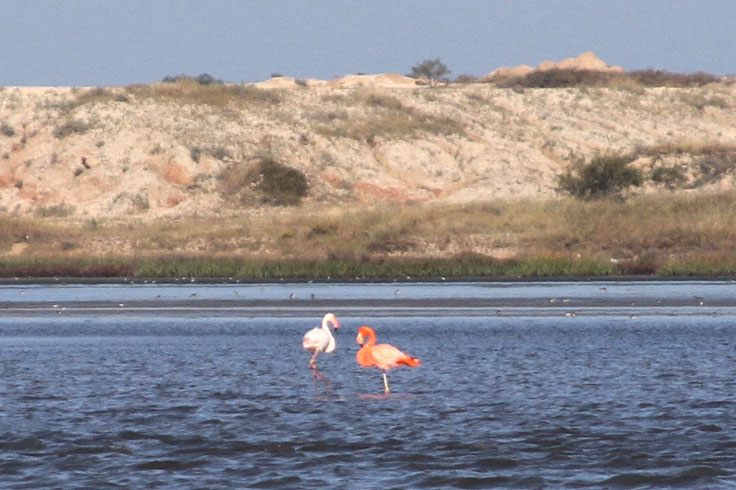Why Flamingos Succeed at Escaping the Zoo While All Other Animals Fail

Just waiting to make a break for it. (Photo: AlwaysShooting/Flickr)
When animals escape zoos, like when humans escape prisons, they’re usually caught pretty quickly. Whether there’s a mass break out, connected to some more devastating event—as in Tbilisi, Georgia, where a heavy flood over the weekend let loose lions, wolves and a hippopotamus onto city streets—or a lone run-away, like the Smithsonian Zoo’s red panda or the Bronx Zoo Cobra, the animals rarely taste freedom for long.
Unless, that is, they’re flamingos.
Of all the species that occasionally make a break for it, flamingos, anecdotally, seem to have the most success. In Japan, more than one flamingo has succeeded in leaving captivity. A flamingo flew the coop in Kansas and afterwards was regularly spotted living a seemingly happy existence along the Gulf Coast. A flamingo that escaped a Utah aviary made its home for years on the Great Salt Lake and became a local celebrity.
Why are flamingos such successful escape artists? To begin with, they can fly. They don’t need to wait for a natural disaster: in Japan, Kansas and Utah, the birds escaped when their wings, normally clipped, grew out before their keepers had a chance to trim them. And once a flamingo is out, he or she also has the advantage of being relatively hardy. (As one flamingo expert put it, “Flamingos are bomb-proof.”)
“While flamingos are thought of as tropical birds, they can tolerate a wider range of temperatures than most people realize, and this could contribute to their success as escapees,” says Matthew J. Anderson, an associate professor of psychology at St. Joseph’s University, who’s studied flamingos and animal psychology. They’re also “fairly shy birds,” he says: they often live in remote and inhospitable places, where they’re not easily caught.
Another advantage that escaped flamingos have: They don’t pose much of a danger to humans. While a lion or wolf might be shot, or a hippo tranquilized, escaped flamingos put only themselves at risk.
In Japan, for instance, when a Greater flamingo escaped a zoo on Hokkaido in 2012, it didn’t go far—to a lake just about 80 miles away, where it made its home alongside a flock of herons. Its keepers tried to net it and to lure it back, by keeping a group of fellow flamingos caged at the lake But as winter closed in, none of that had worked—and some of the still-caged flamingos had been killed by a local fox.
The last time anyone saw the fugitive flamingo was that October. No one knew its fate: it may have escaped to a warmer climate. Or it may have frozen to death. Or that lucky fox might have enjoyed one last flamingo meal.
But other escaped flamingos have fared better. In Okinawa, hundreds of miles to the south of Hakkaido, one jailbreaker spent at least two years living free before disappearing. And when in 2005 a Greater flamingo escaped from Sedgwick County Zoo, in Wichita, Kansas, it survived at least 8 years: in 2013, birdwatcher Neil Hayward spotted it on the Texas Gulf Coast, about two hours southeast of Houston, in the company of a wild American Flamingo, and there were a few sightings in 2014.

The bird on the left is the escapee. (Photo: Courtesy of Neil Hayward)
And the most famous flamingo fugitive, Pink Floyd of Salt Lake City, spent almost two decades in the home he chose after his initial escape. A Chilean flamingo, Pink Floyd’s first stop in Utah was at the city’s Tracy Aviary, in 1985. Three years later, the bird flew from the aviary to the nearby lake, where he stayed through the mid-aughts. At one point, locals stocked his home with plastic flamingos to keep him company; others wanted to import more actual flamingos to the lake in order to create a whole flock.
Pink Floyd was last seen in Idaho, another favorite haunt, but since then he’s been missing, presumed dead. One can only assume that among themselves, flamingos still in aviaries and zoos still whisper his name: He flew away, and he made it.















Follow us on Twitter to get the latest on the world's hidden wonders.
Like us on Facebook to get the latest on the world's hidden wonders.
Follow us on Twitter Like us on Facebook